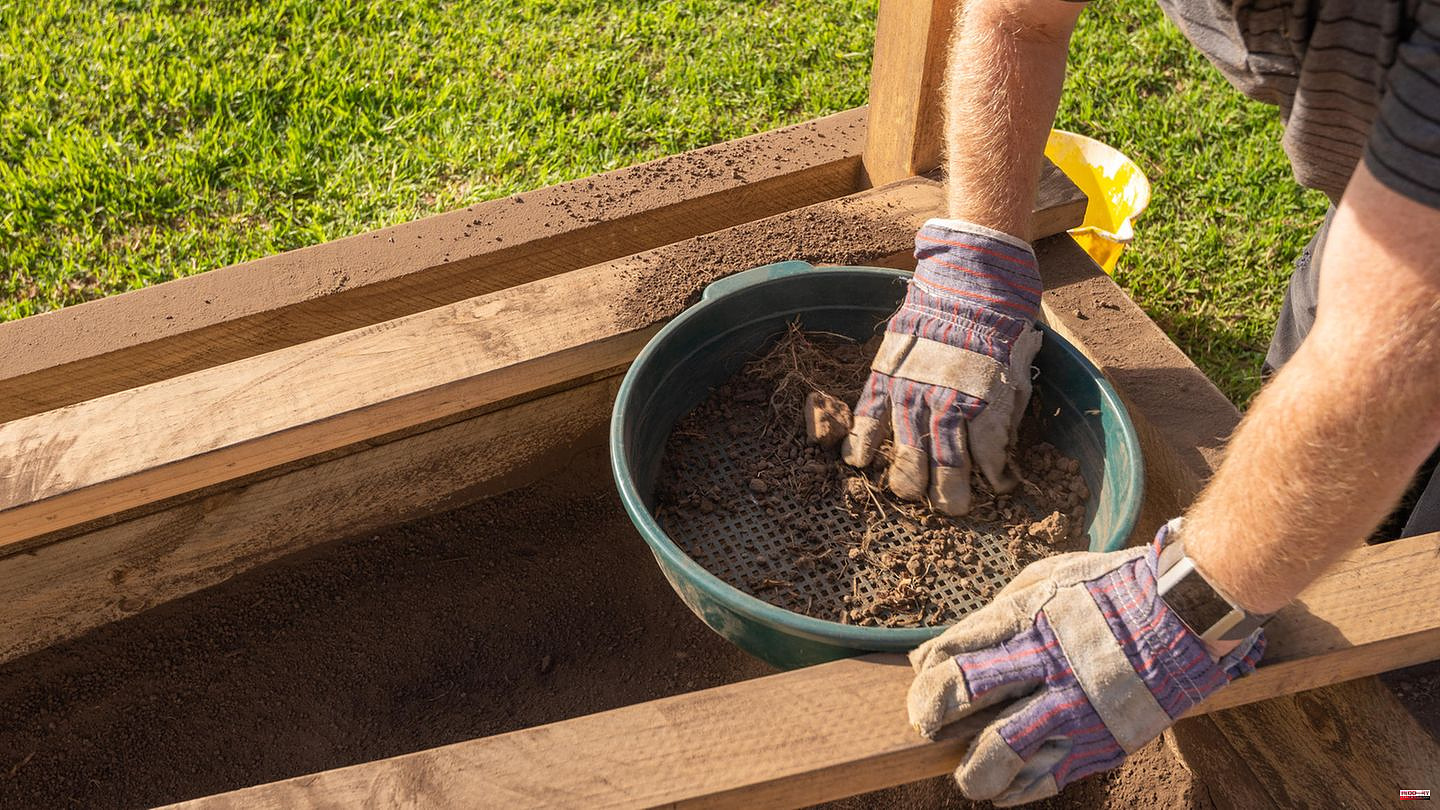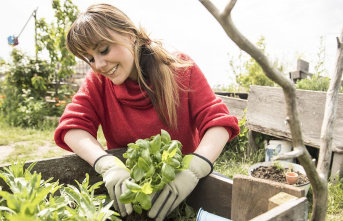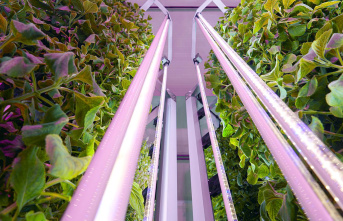Depending on the manufacturer, fresh potting soil contains different components, such as compost and peat or fertilizer. This should ensure that plants are optimally cared for during rearing. However, the nutrient content of the soil decreases with each season, so that it can only be reused to a limited extent - and first has to be prepared with fresh soil or natural fertilizers. A garden sieve can be helpful to loosen up the solid components and remove coarse particles such as roots, weeds and stones. Read on to find out what it is and what to look out for before making a purchase.
As the name suggests, a garden sieve is suitable for distributing seeds and sifting out soil - or sand and compost. In contrast to an ordinary kitchen sieve, the meshes (ideally made of stainless steel) are significantly larger and can vary with special sieve inserts: This has the advantage that you can filter fine and coarse particles out of the soil, such as small stones or root remains. Depending on the manufacturer, there are garden sieves of different sizes, and the shape and mesh size can also vary. In the following we will present the common models in more detail.
A garden sieve is usually round or rectangular and is made of plastic or metal. So that it can be operated by hand, the sizes vary only slightly - unless you opt for a so-called pass-through sieve. These are the most common models:
1. Das Rundsieb
Whether made of plastic or stainless steel, the shape is always the same: a round sieve is small and handy, so it can be easily operated by hand. There are models with interchangeable sieve inserts of different sizes - but some garden sieves only come in one mesh size. For this reason, you should consider in advance whether you want to filter soil, sand or compost.
2. The box sieve
As the name suggests, a box strainer is rectangular and works the same as a round model. However, this garden sieve usually has larger meshes so that it can better filter out coarse particles such as stones, clods of earth and twigs. Here, too, there are models made of plastic or wood - with and without a sliding function to adjust the mesh size.
3. The throw-over sieve
If you have a large garden and you want to sift out large amounts of soil (or compost), a pass-through sieve with a coarse or fine-mesh grid is a better choice. It is significantly larger than an ordinary garden sieve and is not held with the hands, but stands on its own. Then use a shovel to throw the desired quantities through the sieve.
4. The Compost Screen
A self-contained mechanical compost sieve that is operated with a rotating spindle is significantly larger and more expensive to buy than the round or square garden sieve. As the name suggests, the model is primarily used to free compost soil from foreign matter as much as possible - so that it can then be used again.
Now that you have got to know different garden sieves, you should think about the following points before you buy them:
The MaterialAs mentioned at the beginning, most garden sieves are made of plastic or stainless steel. Both materials have advantages and disadvantages: plastic is lighter and more elastic, but it can also break more quickly. Metal, on the other hand, is heavier but also more robust and durable.
The shape Depending on the area of application, a round or rectangular garden sieve is ideal: while round sieves are better suited to evenly distributing fresh seed, box sieves score points when shaking the soil.
The meshesThere are large and small meshes that are suitable for different gardening tasks. For this reason, most screens have different bottom inserts that can be exchanged. If this is not the case, you should consider in advance which mesh size is the better choice: fine meshes are suitable for dry soil, medium-sized for coarse and wet soil - large meshes are better suited for large quantities.
This article contains so-called affiliate links. Further information are available here.












